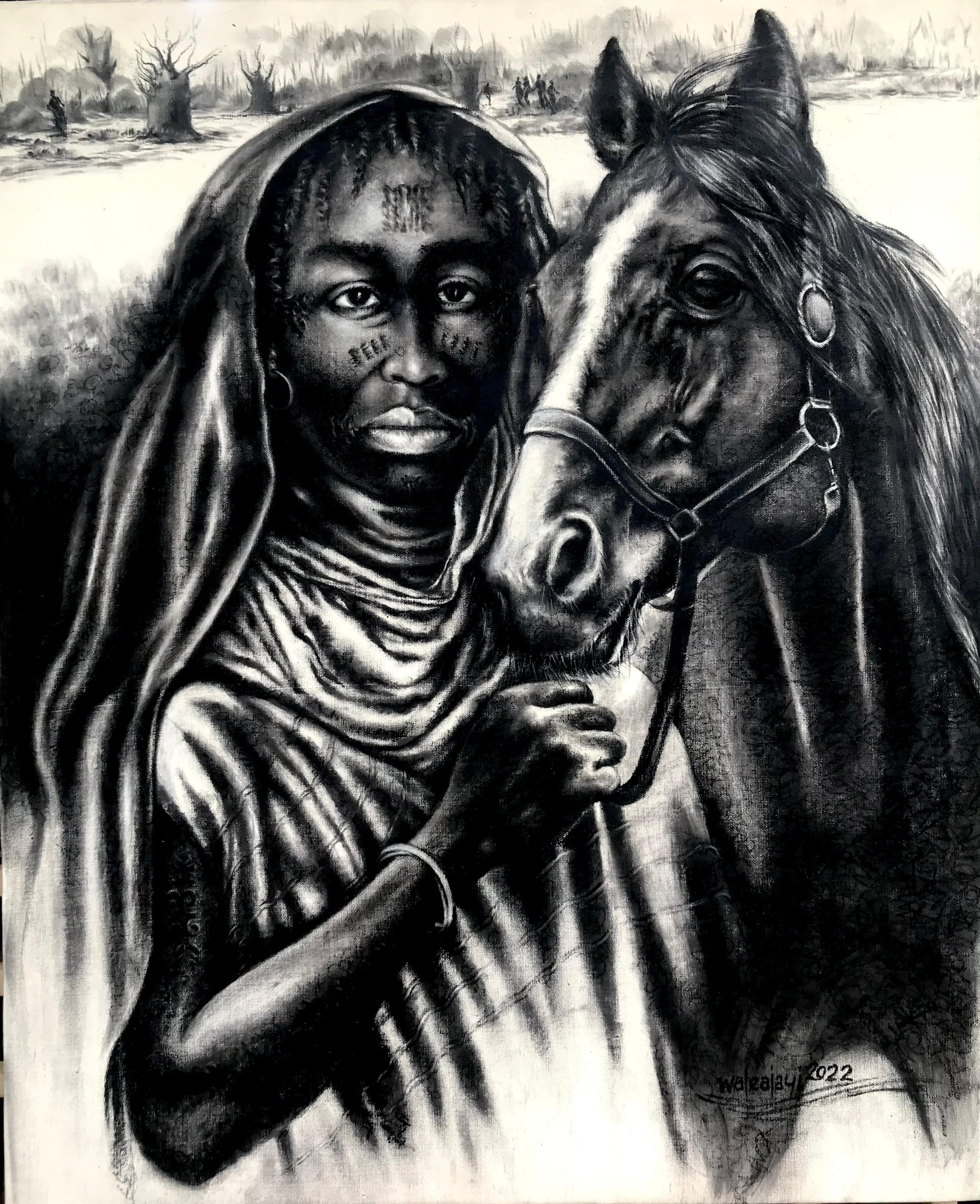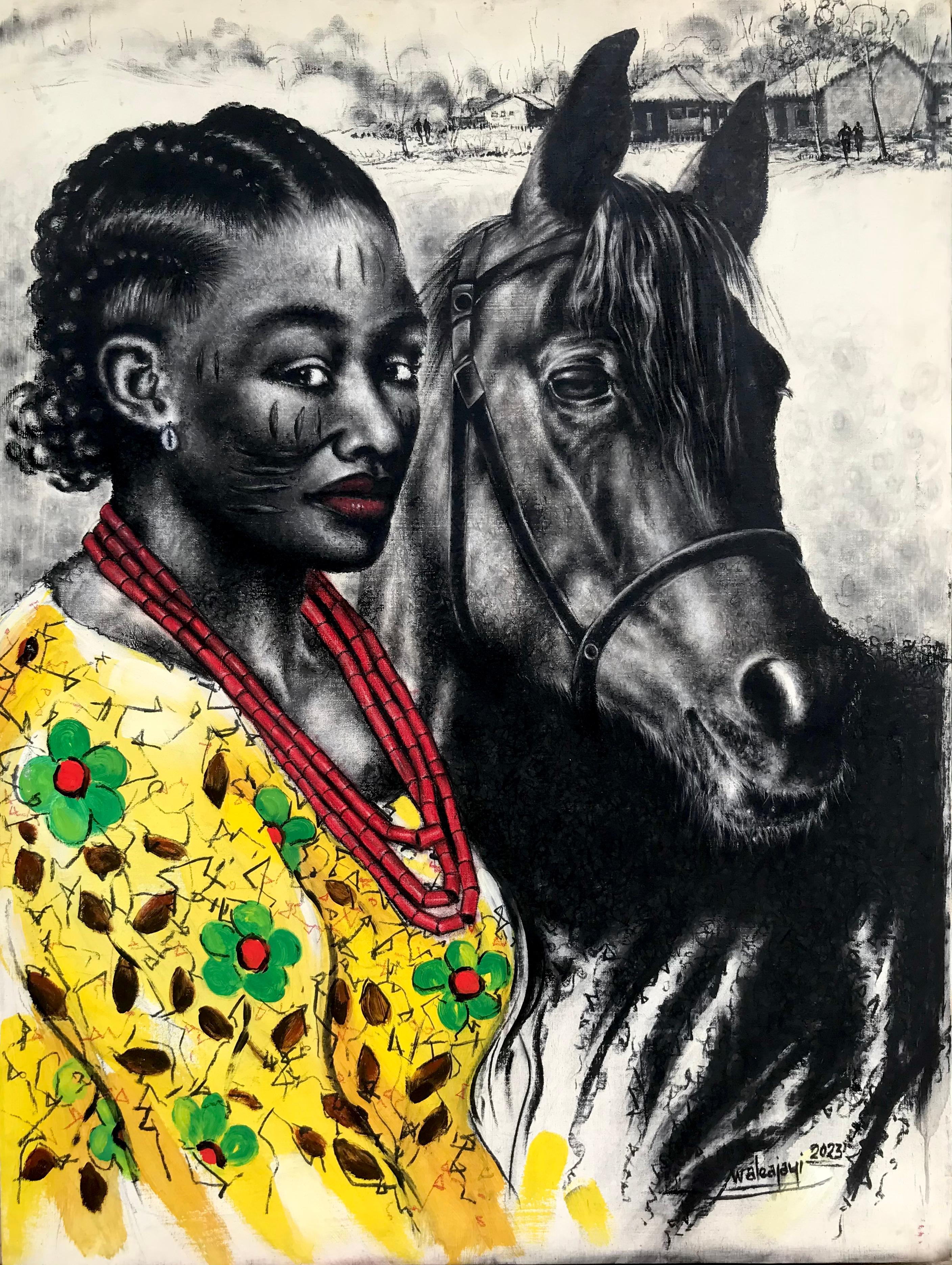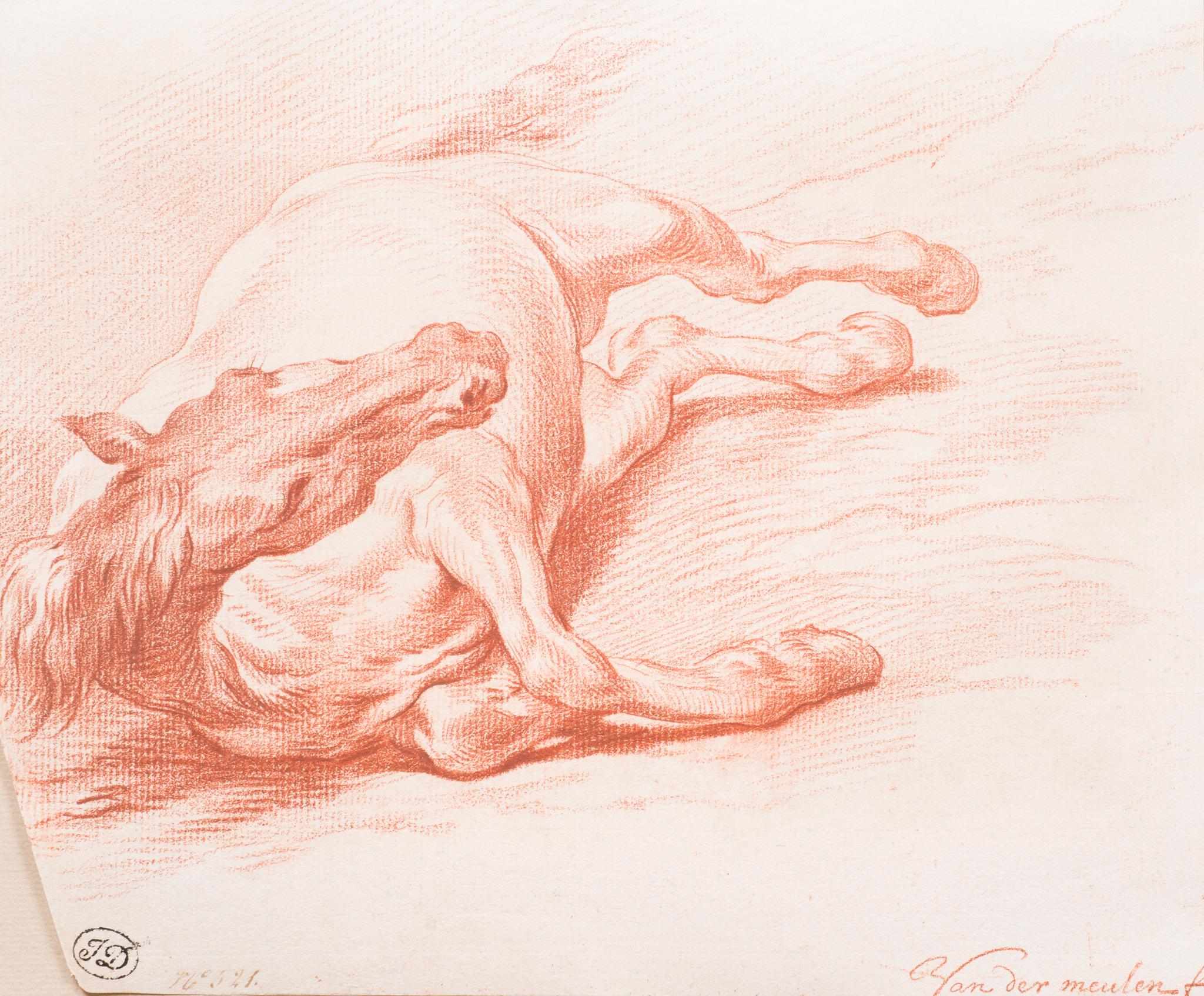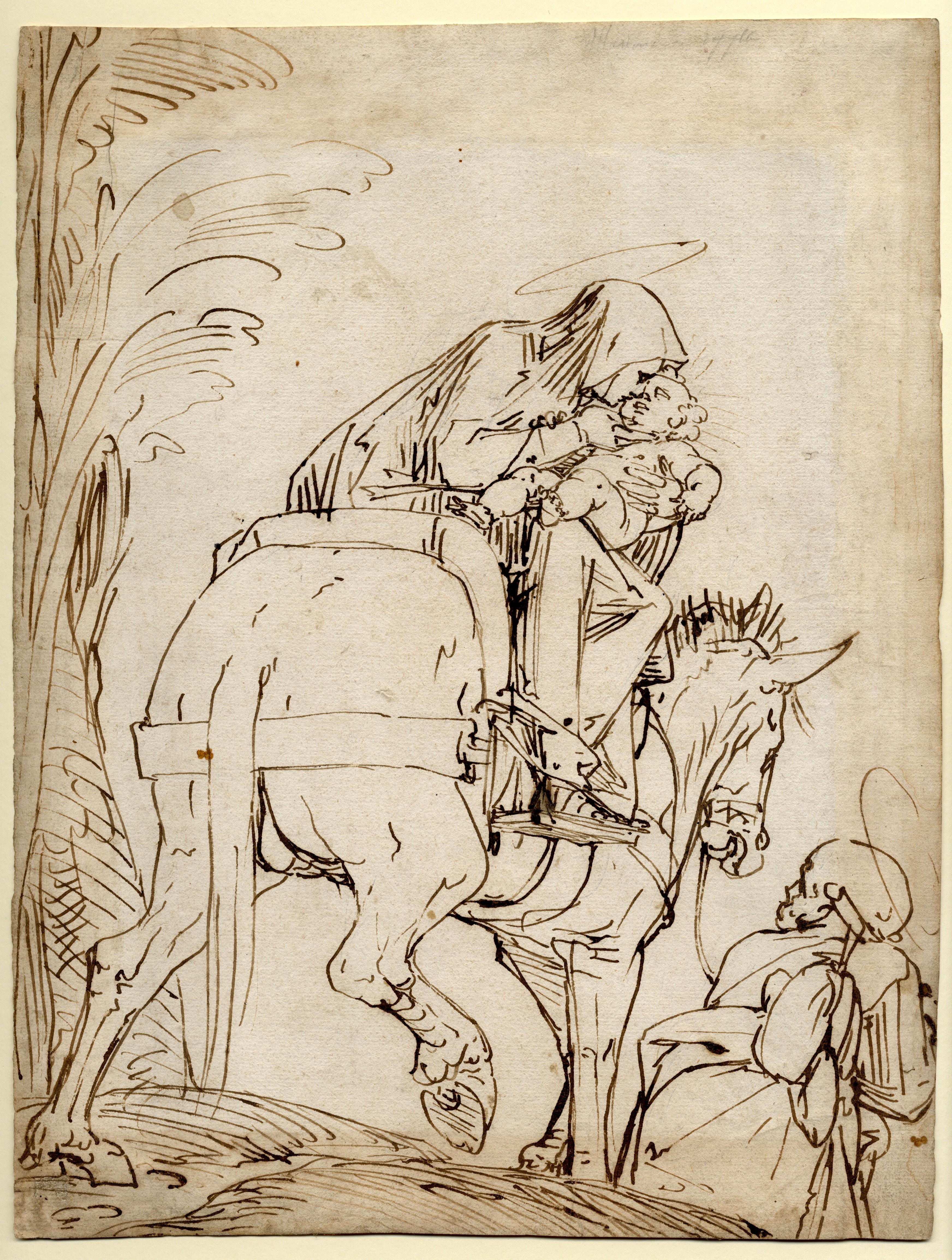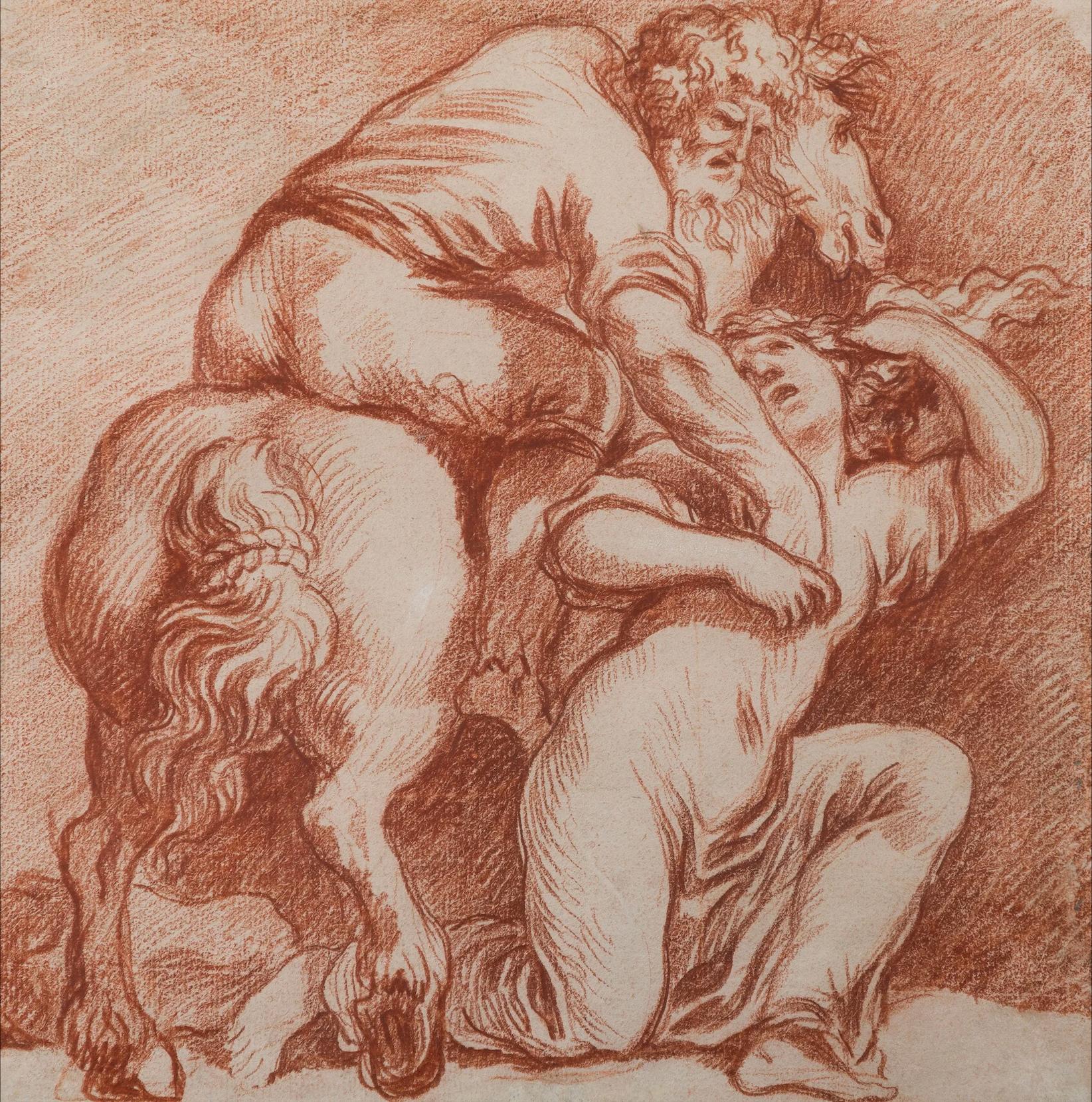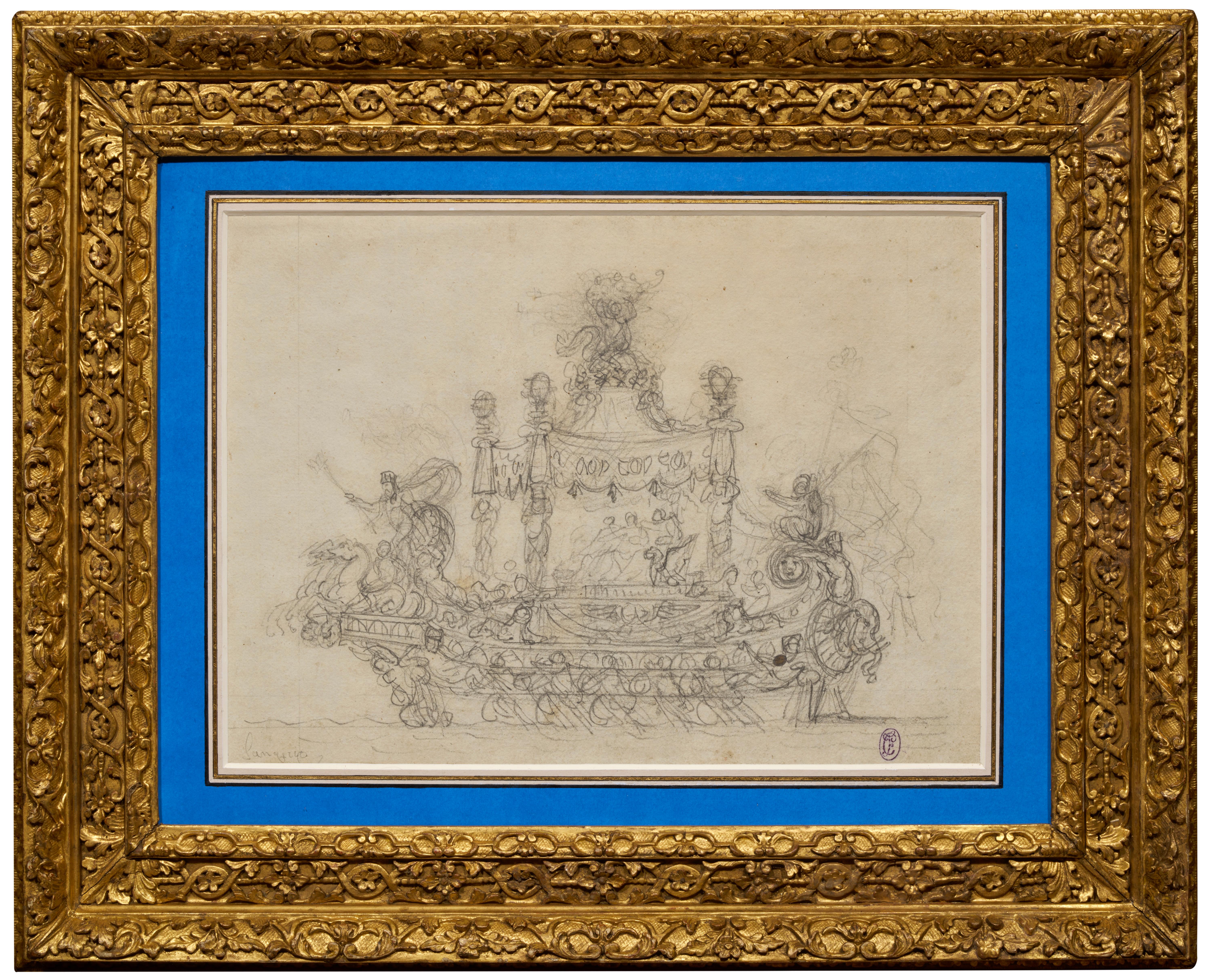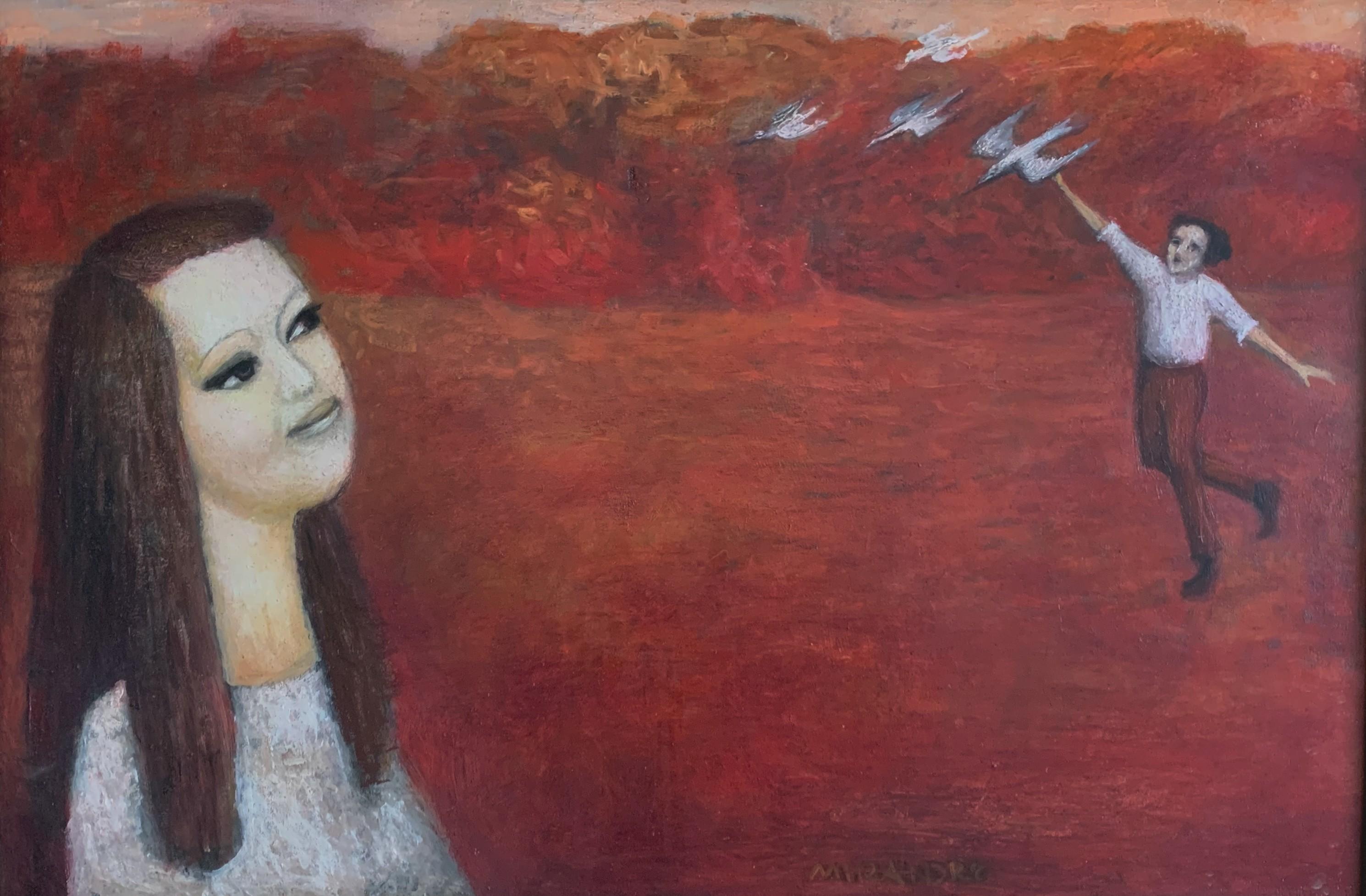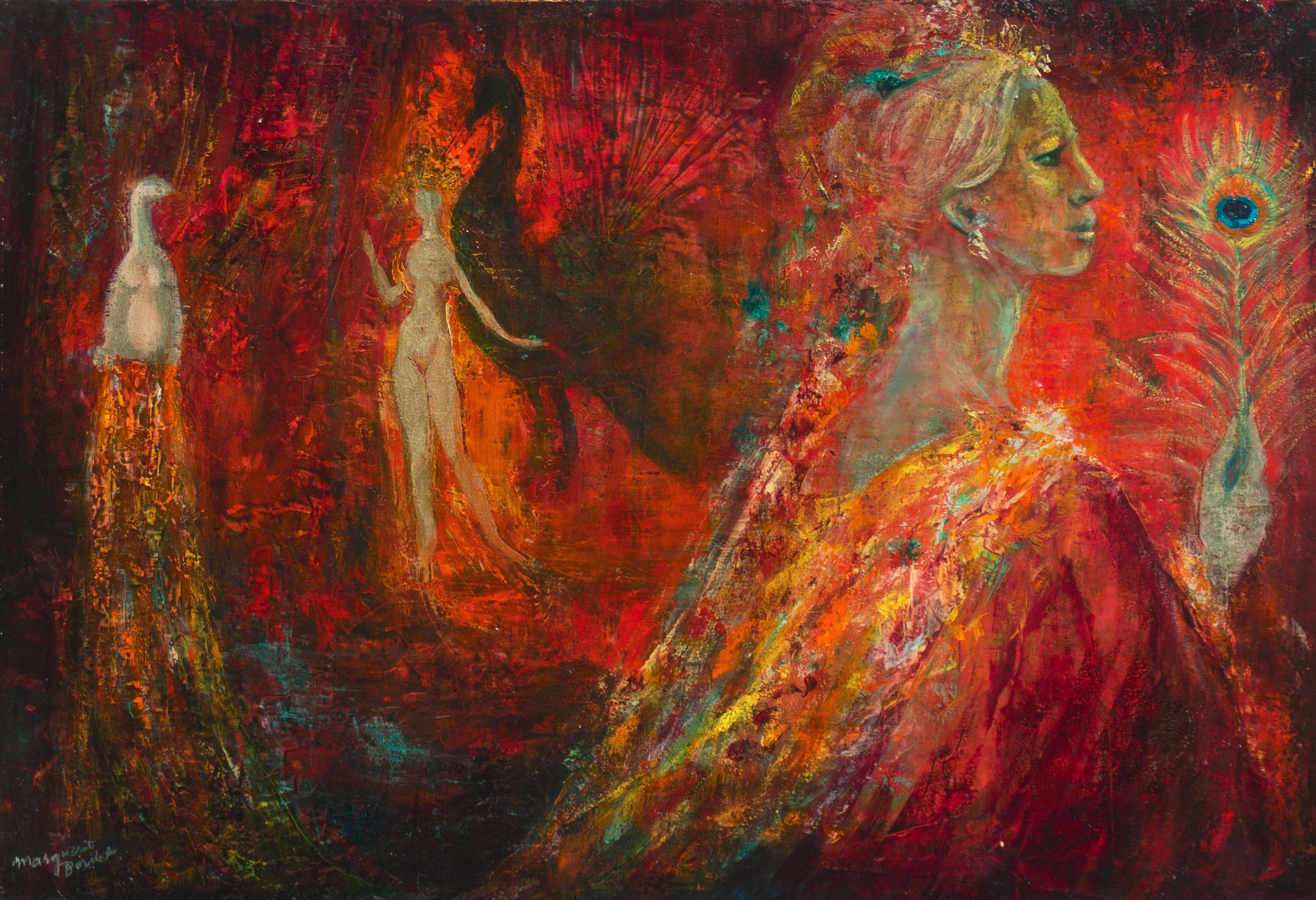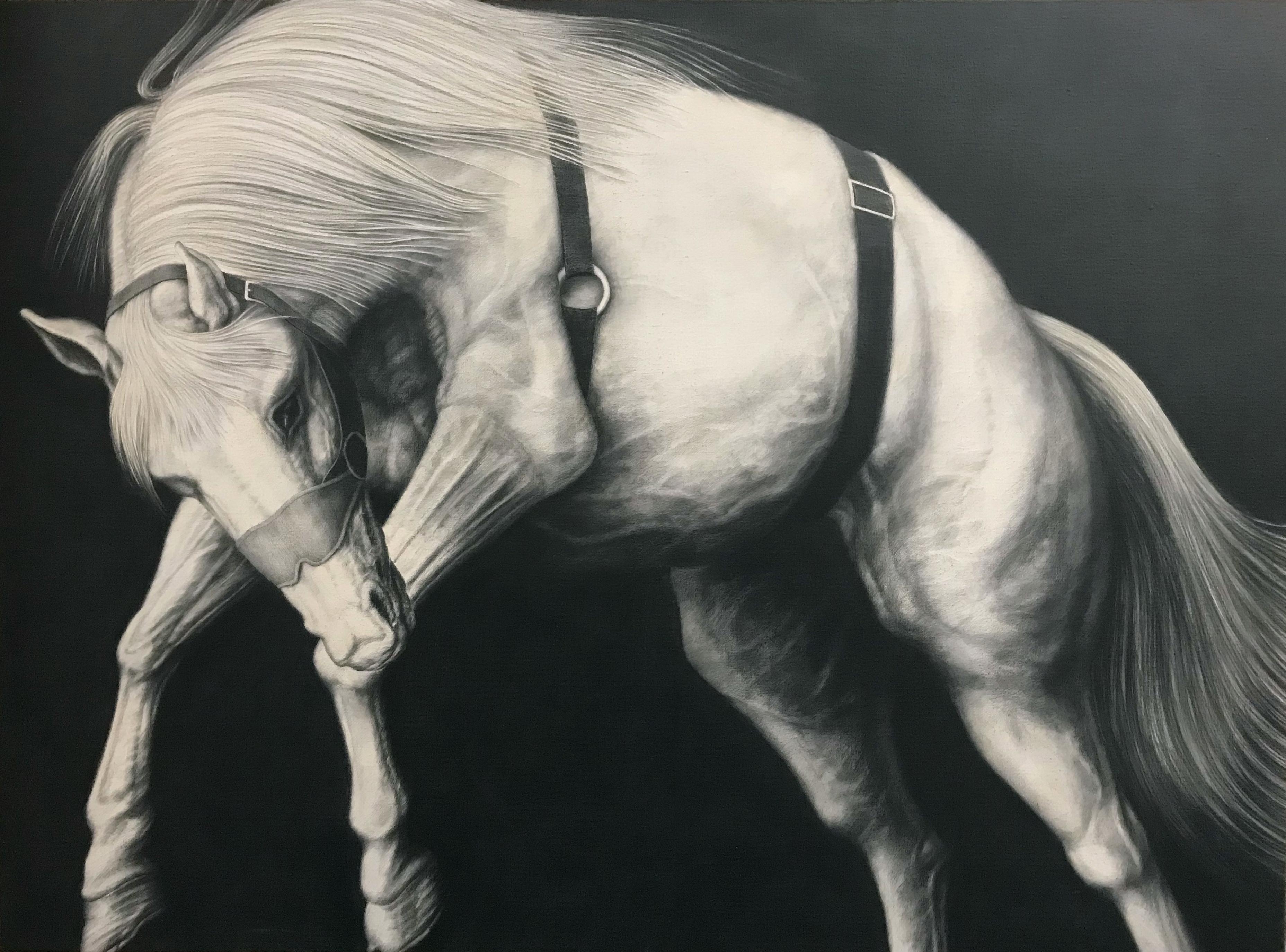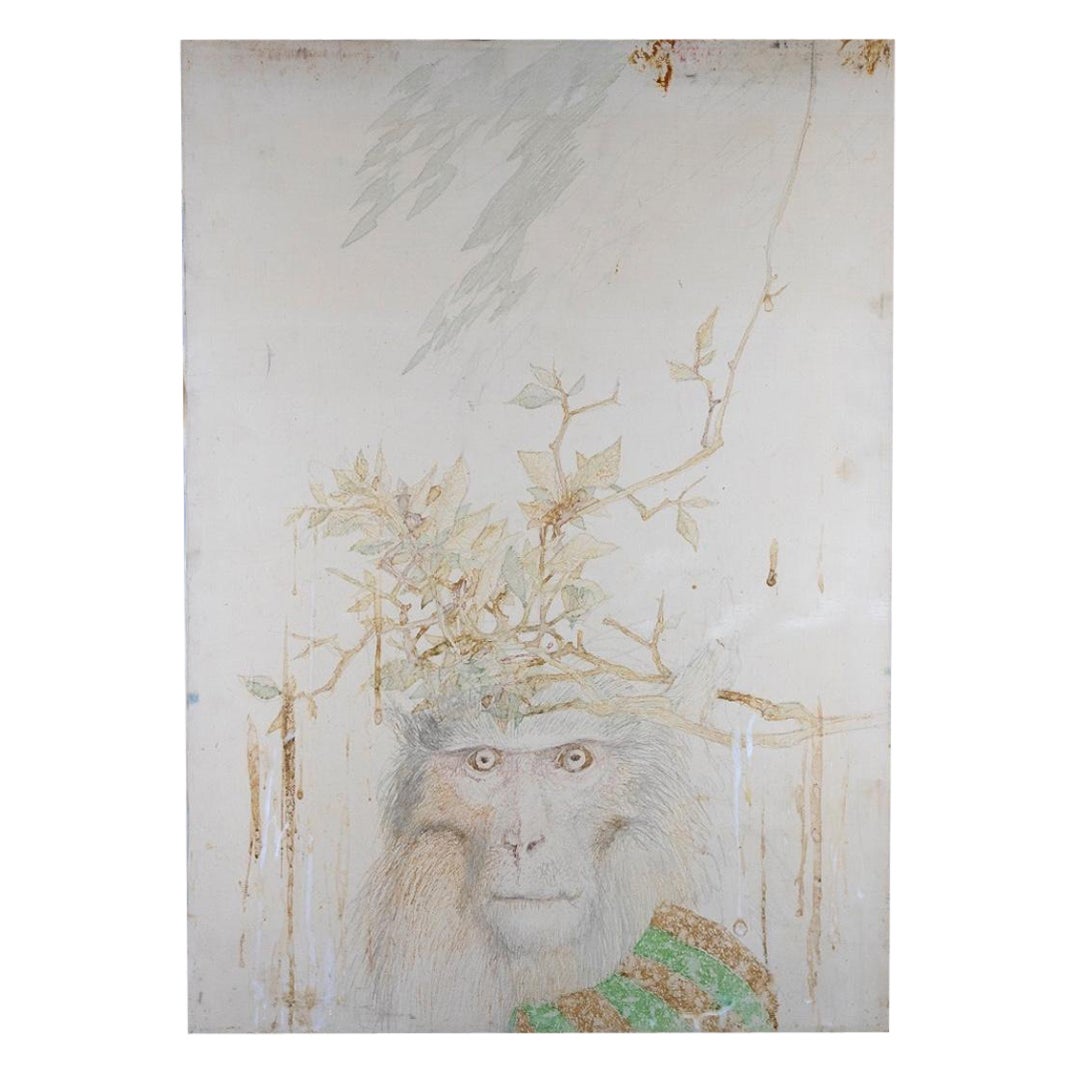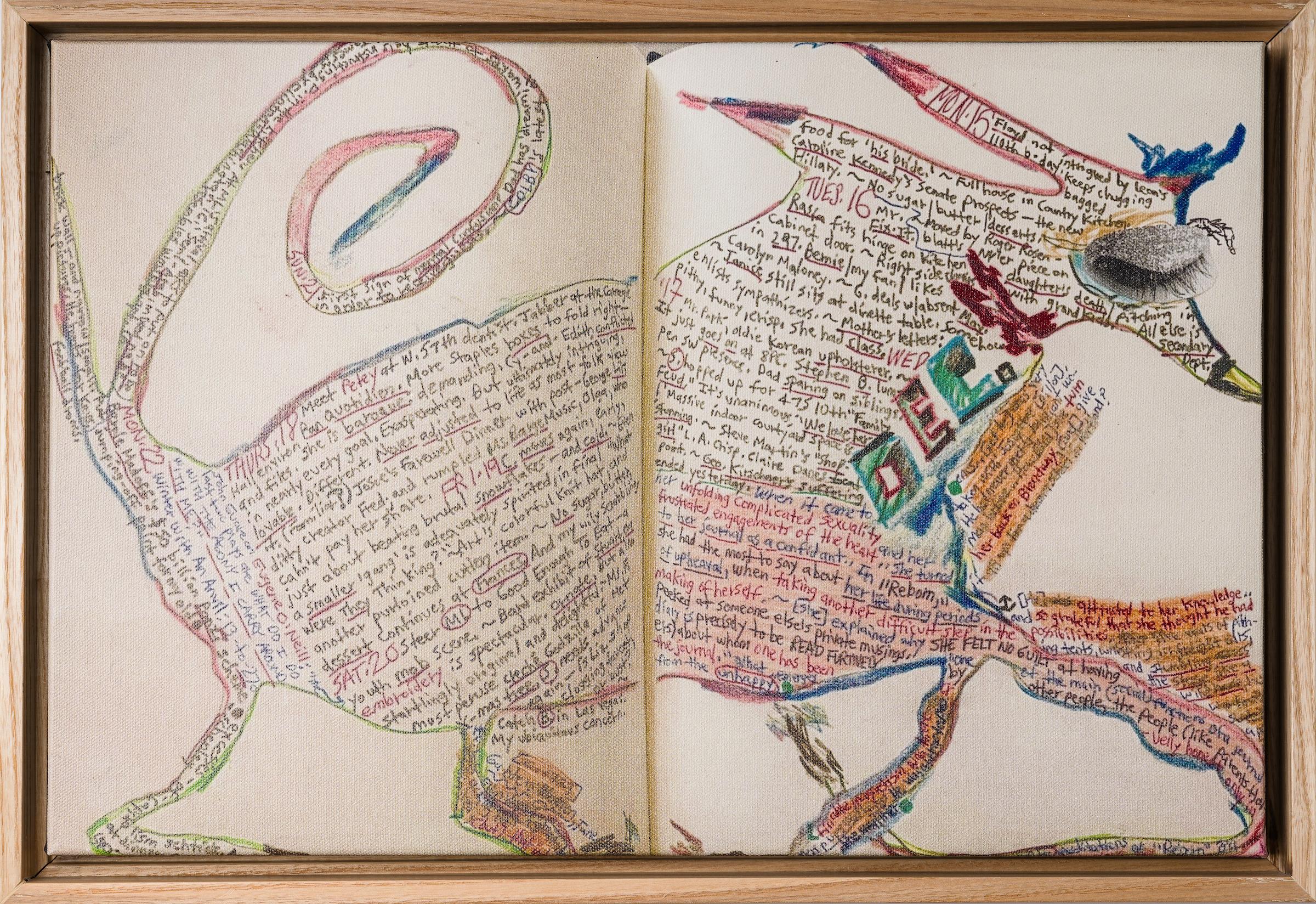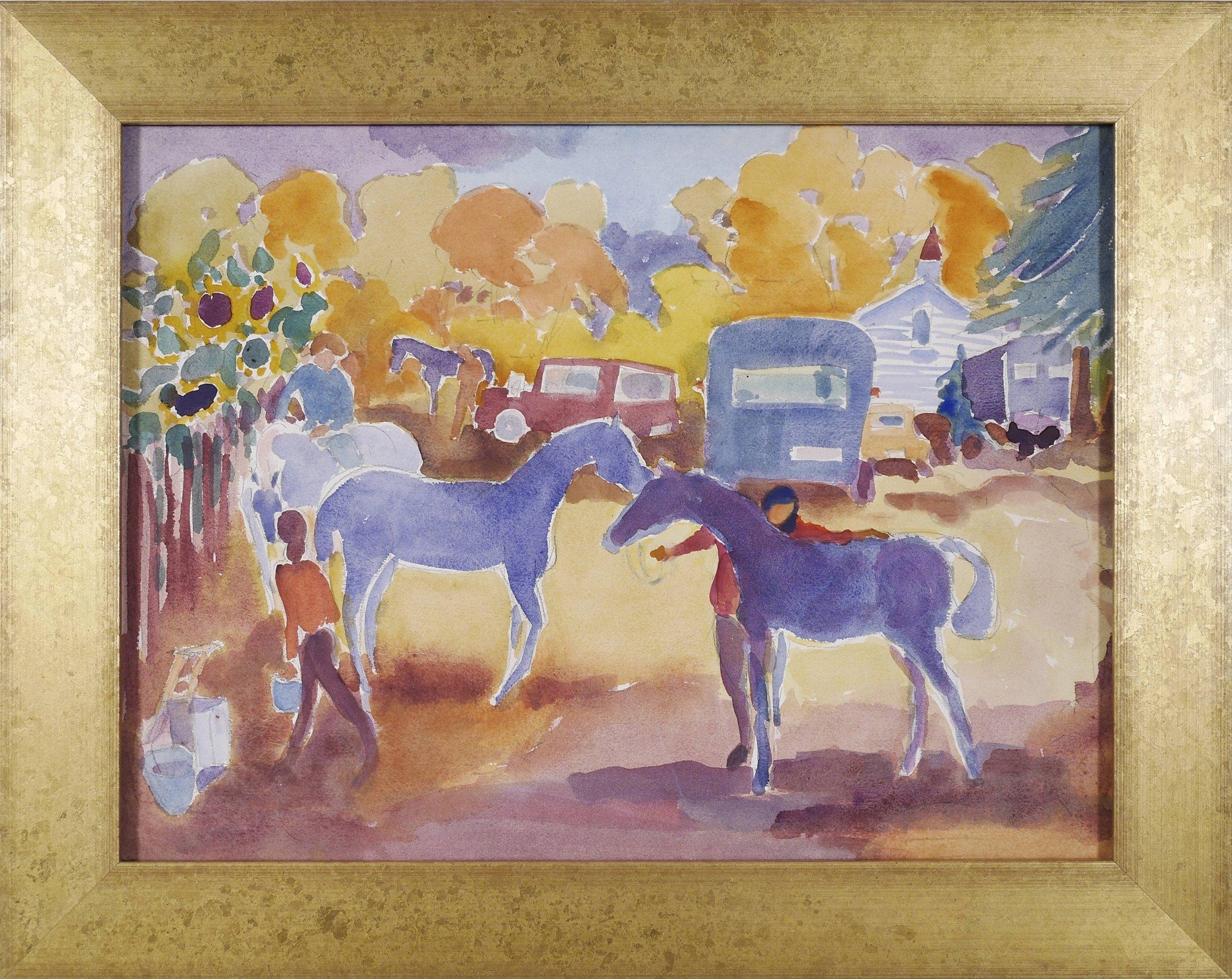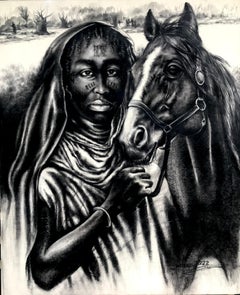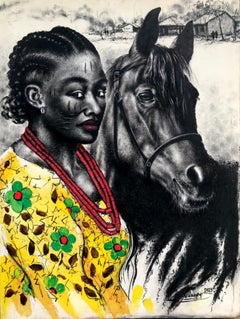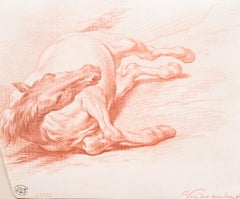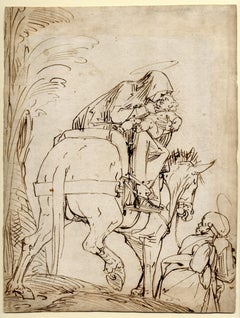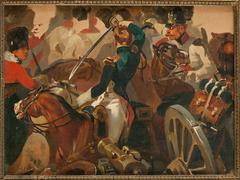
Sketch of the Battle of Hanau
View Similar Items
1 of 2
Émile Jean-Horace VernetSketch of the Battle of Hanauc. 1824
c. 1824
About the Item
- Creator:Émile Jean-Horace Vernet (1789 - 1863, French)
- Creation Year:c. 1824
- Dimensions:Height: 9.57 in (24.3 cm)Width: 13.12 in (33.3 cm)
- Medium:
- Movement & Style:
- Period:
- Condition:framed.
- Gallery Location:Greven, DE
- Reference Number:1stDibs: LU446662272
Émile Jean-Horace Vernet
Émile Jean-Horace Vernet was a French painter of battles, portraits, and Orientalist Arab subjects. He was born to Carle Vernet, another famous painter, who was himself a son of Claude Joseph Vernet. He was born in the Paris Louvre, while his parents were staying there during the French Revolution. Vernet quickly developed a disdain for the high-minded seriousness of academic French art influenced by Classicism, and decided to paint subjects taken mostly from contemporary culture. Therefore, he began depicting the French soldier in a more familiar, vernacular manner rather than in an idealized, Davidian fashion. Some of his paintings that represent French soldiers in a more direct, less idealizing style, include Dog of the Regiment, Trumpeter's Horse, and Death of Poniatowski. He gained recognition during the Bourbon Restoration for a series of battle paintings commissioned by the duc d'Orleans, the future King Louis-Philippe. Critics marvelled at the incredible speed with which he painted. Many of his paintings made during this early phase of his career were "noted for their historical accuracy as well as their charged landscapes." Examples of paintings in this style include his Four Battles series: The Battle of Jemappes (1821), The Battle of Montmirail (1822), The Battle of Hanau (1824), and The Battle of Valmy (1826). Over the course of his long career, Horace Vernet was honoured with dozens of important commissions. King Louis-Philippe was one of his most prolific patrons. His depictions of Algerian battles, such as the Capture of the Smahla and the Capture of Constantine, were well-received, as they were vivid depictions of the French army in the heat of battle. After the fall of the July Monarchy during the Revolution of 1848, Vernet discovered a new patron in Napoléon III of France. He continued to paint representations of the heroic French army during the Second Empire and maintained his commitment to representing war in an accessible and realistic way. He accompanied the French Army during the Crimean War, producing several paintings, including one of the Battle of the Alma, which was not as well received as his earlier paintings. One well known and possibly apocryphal anecdote maintains that when Vernet was asked to remove a certain obnoxious general from one of his paintings, he replied, "I am a painter of history, sire, and I will not violate the truth," hence demonstrating his fidelity to representing war truthfully. Vernet died in his hometown of Paris in 1863.
Authenticity Guarantee
In the unlikely event there’s an issue with an item’s authenticity, contact us within 1 year for a full refund. DetailsMoney-Back Guarantee
If your item is not as described, is damaged in transit, or does not arrive, contact us within 7 days for a full refund. Details24-Hour Cancellation
You have a 24-hour grace period in which to reconsider your purchase, with no questions asked.Vetted Professional Sellers
Our world-class sellers must adhere to strict standards for service and quality, maintaining the integrity of our listings.Price-Match Guarantee
If you find that a seller listed the same item for a lower price elsewhere, we’ll match it.Trusted Global Delivery
Our best-in-class carrier network provides specialized shipping options worldwide, including custom delivery.You May Also Like
Princess from the Savannah
Located in Ibadan, Oyo
The drawings showcase the beauty of the black women on one hand and also reflect the intimacy animals possess with females, especially horses, and princesses in royalty. They are muc...
Category
21st Century and Contemporary Old Masters Figurative Drawings and Waterc...
Materials
Canvas, Charcoal
$2,480 Sale Price
20% Off
Ayanfe Omo Oba
Located in Ibadan, Oyo
The drawings showcase the beauty of the black women on one hand and also reflect the intimacy animals possess with females, especially horses, and princesses in royalty. They are muc...
Category
21st Century and Contemporary Old Masters Figurative Drawings and Waterc...
Materials
Canvas, Charcoal
$2,840 Sale Price
20% Off
Study of a horse lying on its right side seen from the front
By Adam Frans van der Meulen
Located in Stockholm, SE
Provenance:
Jean-Marc Du Pan (1785–1838), Geneva (L. 1440), passed to his brother
Alexandre-Louis Du Pan (1787–1846);
his sale, Geneva, March 26–28, 1840, included in lots 913–917;
...
Category
17th Century Old Masters Animal Drawings and Watercolors
Materials
Paper, Crayon
The Flight into Egypt
Located in New York, NY
Inscribed: 3. una Madonna che va in Egitto, verso, and Madonna che va in Egitto, recto
Provenance:
Private Collection, UK, since 1999
This expressive and boldly executed drawing is the work of Luca...
Category
16th Century Old Masters Figurative Drawings and Watercolors
Materials
Chalk, Ink, Pen, Paper
Man on Horseback Abducting a Woman
Located in Paris, Île-de-France
Jean-Robert ANGO (Active 1759 – 1773)
Man on Horseback Abducting a Woman
Red chalk and white chalk
26.1 x 25.9 cm
Provenance
Libert-Castor sale, November 19, 1993 (lot no. 23, ill...
Category
1760s Old Masters Animal Drawings and Watercolors
Materials
Chalk
A dazzling Venetian Regatta Boat Study attributed to Alessandra Mauro
Located in PARIS, FR
This stunning Baroque study depicts a regatta boat, a type of vessel developed in eighteenth-century Venice for the regattas organized by the Serenissima during visits by royalty and princes. We propose to link this drawing to the work of Alessandro Mauro, an artist who specialized in this type of composition, as illustrated by a drawing from him at the Metropolitan Museum.
1. Description of the boat
The greatest decorative fantasy reigns in this preparatory study, which blends mythological and exotic elements with references to ancient Egypt. Our drawing is probably an initial thought, destined to be refined and clarified later in pen and ink (as evidenced by the ink stain in the lower right). A quadriga of seahorses guided by Neptune stands at the stern of the boat, shown well above the waterline (perhaps to outline its empty volume). One of the seahorses is ridden by a newt, while Amphitrite lies at the feet of the sea god.
The center of the boat is occupied by a vast baldachin resting on four atlantes and surmounted by a figure riding an animal (a dragon?). Three figures sit beneath the canopy, one of them on a griffin-shaped seat. This allusion to Egyptian antiquity echoes the winged sun (sometimes a symbol of the god Horus, as in the temple of Edfu in Egypt) that adorns the sides of the promontory on which this baldachin rests.
Another flag-bearer figure crouches at the stern of the boat on a raised seat, on the reverse of which is a crowned mermaid whose arm, extended backwards, rests on a mascaron decorated with a radiant face (Helios?) and whose torso surmounts an elephant's head. The heads of the rowers and their oars are sketched all along the boat, whose sides are embellished with elongated naiads.
2. The Venetian regatta boats
An exhibition held in 2013 at the Ca' Rezzonico (the Venetian eighteenth-century museum) paid tribute to these regatta boats through studies and prints depicting them. The regattas organized by the Serenissima in honor of visiting princes and sovereigns were among the most spectacular ceremonies in Venice. Some important artists of the 18th century contributed to the creation of these extravagant boats which were given exotic names such as bissona, malgarota or peota.
The specialists in this field were Andrea Urbani and the brothers Alessandro and Romualdo Mauro. They were born into a family of theater decorators in Piedmont, but little is known about their detailed biography. Alessandro was the architect of the Dresden opera house and of the St. Samuel Theater in Venice (in collaboration with his brother Romualdo), but also worked as stagehand and set designer in Vienna, Rome and Turin. A drawing produced around 1737 from the Metropolitan Museum (7th photo in the gallery) bears witness to his activity as a regatta boat designer.
This drawing is a much more elaborate version than the one presented here, having been entirely reworked in brown ink. However, a figure at the bow of the boat, executed solely in black chalk, still bears witness to a technique similar to that of our drawing.
It is difficult to know whether the boat depicted in our drawing was a project for an actual boat or whether it remained in the planning stage, but the front of our boat (Neptune and the quadriga of seahorses ridden by a newt) bears several similarities to that of a parade boat depicted in the print published by Michele Marieschi entitled Regatta on the Grand Canal, between the Foscari and Balbi Palaces (last photo in the gallery). This print is dated 1741, which could confirm that our work dates from around 1740.
The area between Neptune and the quadriga that precedes him on this strange paddle-boat appears to be partially submerged, confirming that the waterline of our boat was probably intended to be much lower than the one shown in our drawing.
The Correr Museum’s collection holds one of the most important collection of engravings and drawings devoted to these specifically Venetian Baroque productions. These boats were intended to last the duration of a festival. Today, they are only documented by preparatory drawings or prints that testify to the sumptuousness of their decoration. This taste for regatta boats lasted throughout the Venetian eighteenth century, and the conception of regatta boats also attracted great masters such as Giambattista Tiepolo, Francesco Guardi or Giambattista Piranesi...
Category
Mid-18th Century Old Masters Figurative Drawings and Watercolors
Materials
Chalk
